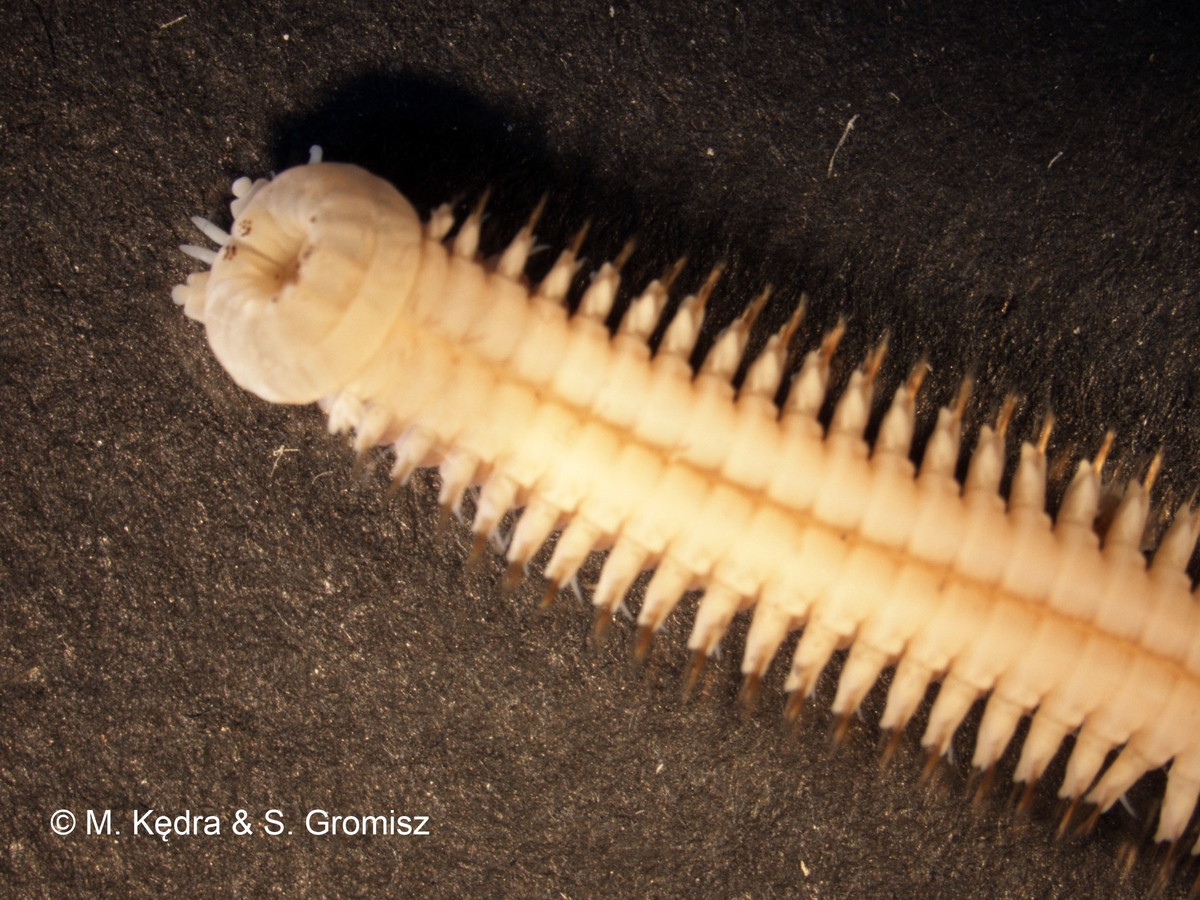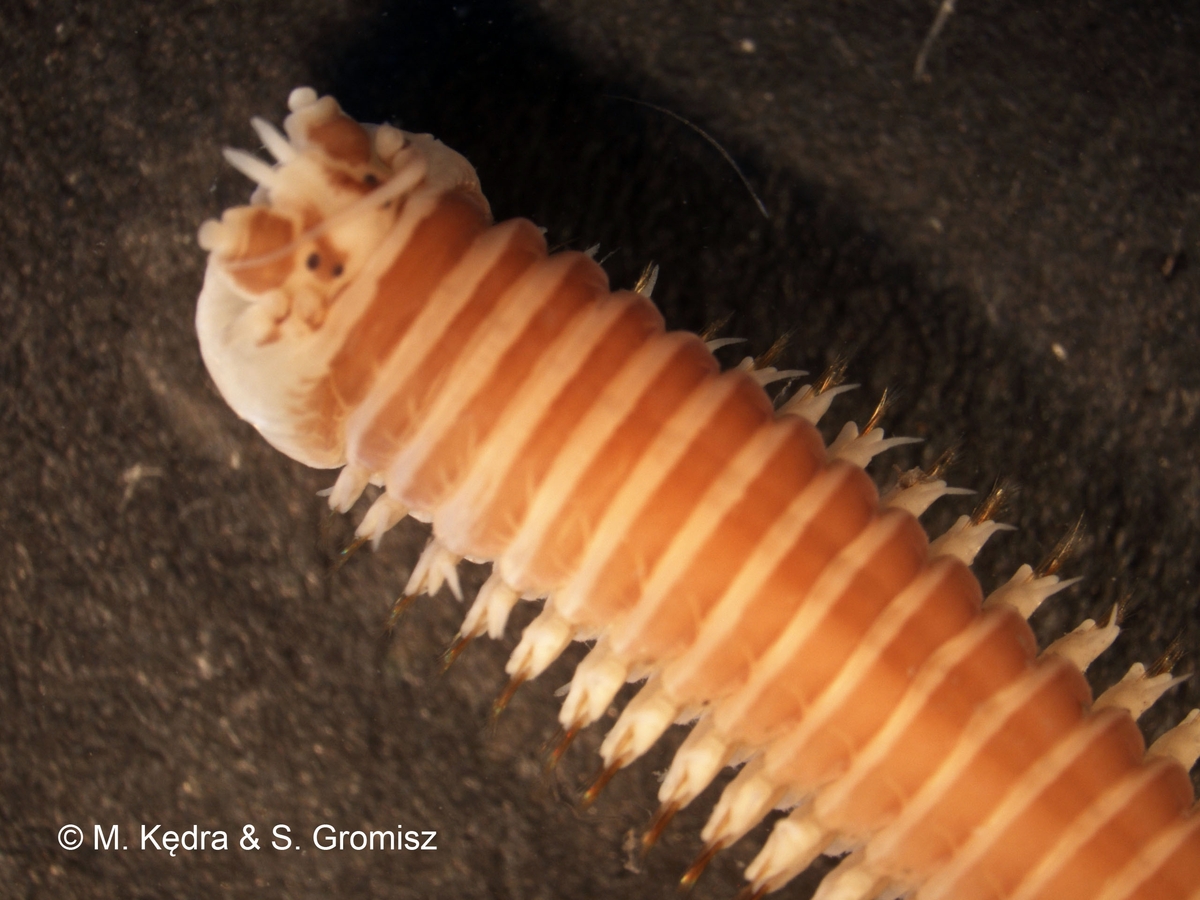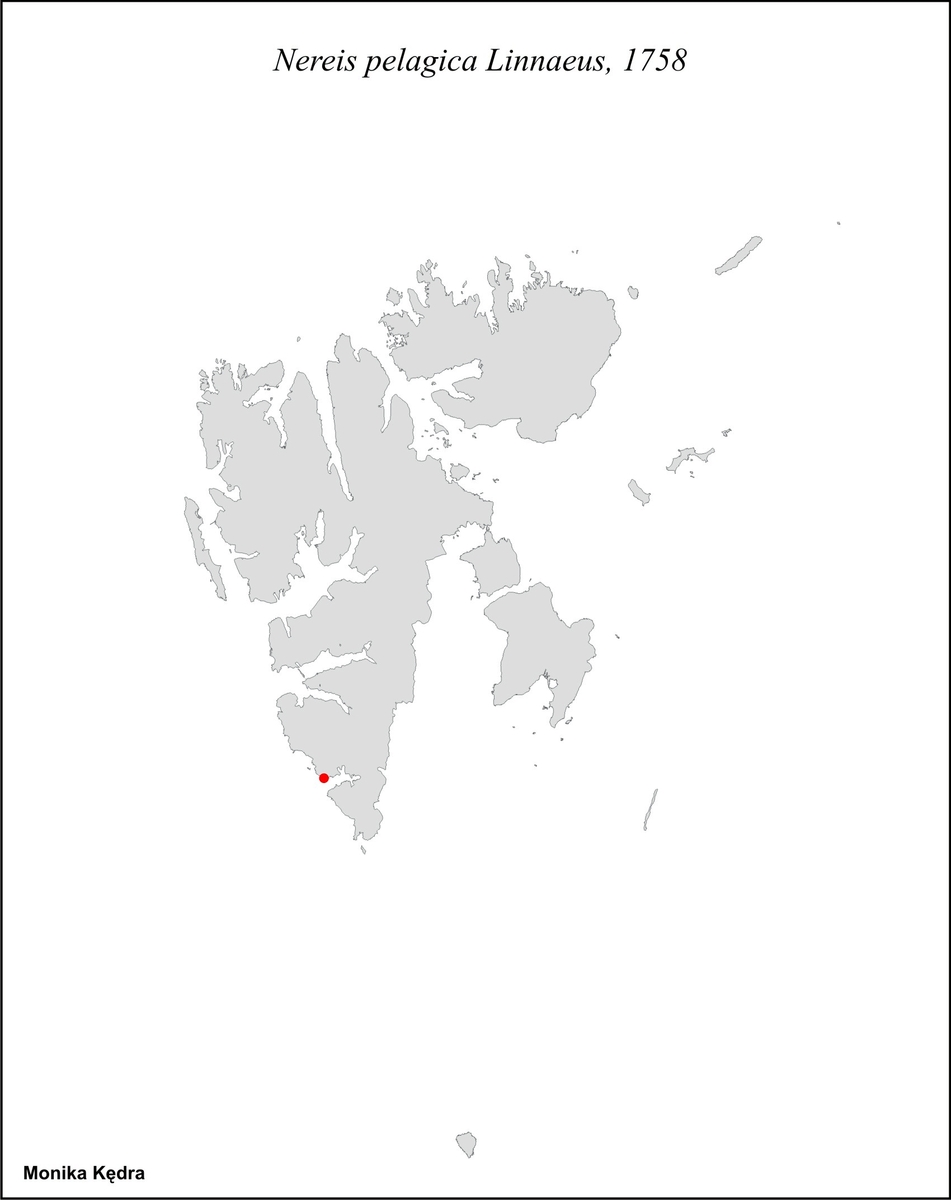Nereis pelagica Linnaeus, 1758

|

|

|
Nereis verrucosa Müller, 1776
Nereis longissima (non Johnston) Hamond, 1966
Distinguishing characteristics
Head with long appendages, pharynx with 2 jaws, parapodia divided into 3 to 4 lobes.
Number and composition of paragnaths on pharynx.
Shape and size of parapodial lobes in anterior chaetigers.
Species description
Body elongate, tapering posteriorly, dorsal surface convex. Prostomium with a pair of antennae, a pair of biarticulate palps longer than the antennae and two pairs of eyes in a trapezoid arrangement. Peristomium with 4 pairs of tentacular cirri, dorsal tentacular cirri longer than ventral ones, second dorsal tentacular cirrus reaching chaetiger 5. Pharynx with 2 jaws and oral and maxillary rings with conical paragnaths. VI group of paragnaths - 4 large cones (3-7). Groups VII-VIII - composed of irregular rows of paragnaths decreasing in size toward the mouth. Parapodia of first two chaetigers uniramous with 3 lobes. Remaining parapodia biramous with 4 lobes. Both notopodial lobes of similar lengths, ventral neuropodial slightly shorter and neuropodial acicular lobe the shortest. Dorsal notopodial, notopodial acicular and ventral neuropodial lobes all broadly rounded in anterior chaetigers. Dorsal cirri longer than the parapodial lobes, ventral cirri shorter or of comparable length as the ventral neuropodial lobe.
Size
Up to 150 mm for 100 chaetigers.
Color
Alive: yellowish, greenish, golden brown, reddish brown, olive green or violet.
Habitat
Predominantly intertidal, though occasionally found sublittorally where the morphologically similar Nereis zonata tends to replace it. Adult lives in a mucous tube on the underside of half embedded stones and boulders or in the holdfasts of large algae.
Mobility
Mobile.
Feeding
Carnivore, omnivore, predator, scavenger.
Life cycle
Distribution
World – wide, West Greenland, North Sea, east Baltic Sea, Iceland, Faroes, east coast of North America (Hudson Bay to Florida), South Atlantic, North Pacific.

